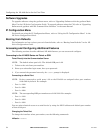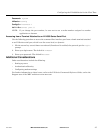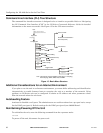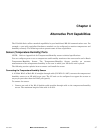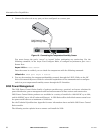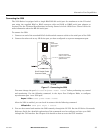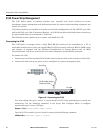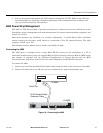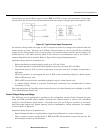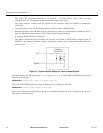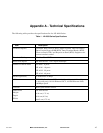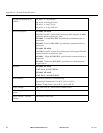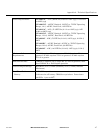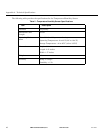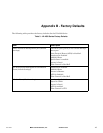
Alternative Port Capabilities
42
MRV Communications, Inc. www.mrv.com 451-0308
You must change the port’s “access” to “power model ir4800” before performing any control and
monitoring operations. Use the following command, in the Async Port Configure Mode, to
configure asynchronous port 10 as a 4800 port:
Async 1-10:0>>access power model ir4800
Once the 4800 is enabled, you can check its status with the following command:
InReach:0>> show port async 10 status
3. You can also control and monitor the 4800 remotely through the LX CLI. Refer to the LX-Series
Commands Reference Guide for a detailed explanation of the commands used to configure and
view your 4800 through the CLI interface.
Using LX Ports as Alarm Inputs and Control Outputs
The LX-Series can be configured to provide two low voltage/low current outputs per port which can be
used to control remote devices. Using the DTR and RTS signals, these are designated Control
Outputs. They can be used to control external equipment, or they may be used as the controlling
voltage for Alarm Inputs circuits.
The LX-Series can be configured to provide two signal monitor inputs per port using the DSR and
CTS signal to provide a remote device monitoring capability. These are designated Alarm Inputs. The
following sections describe the use of these signals in greater detail.
Some common terms are:
• Alarm Inputs - LX-Series port input signals DSR and CTS used in conjunction with the Signal-
Notice software feature to monitor real world events.
• Alarm Points - High impedance, low current, isolated inputs available in the MRV Corporation
IR-7104 product.
• Control Outputs - LX-Series port output signals DTR and RTS managed with the Access Control
software commands that could be used to control external equipment or provide a controlling
voltage for Alarm Inputs.
• Control Relays - True SPDT (Single Pole Double Throw) “Form C” Relay contact points
available in the MRV Corporation IR-7104 product.
Alarm Inputs Setup and Usage
The LX-Series can be configured to provide two Alarm Inputs per port using the DSR and CTS
signals. These are enabled with the Signal-Notice feature. Signal-Notice utilizes sets of Trigger-
Action-Rule commands to detect contact closure/opens. The contacts you are monitoring may be
located within your facility, for example doors alarms, window alarms or fluid level sensors. The
contacts may also be contained within your equipment you wish to monitor, for example equipment
fault alarms, temperature alarms and other error condition signals. The signaling device may be a
simple electro-mechanical device such as a switch, a magnetic contact or a relay. The signaling device
may also be electrical such as an opto-isolator, a CMOS driver or a transistor circuit. Typical circuits
are illustrated in Figure 20.



